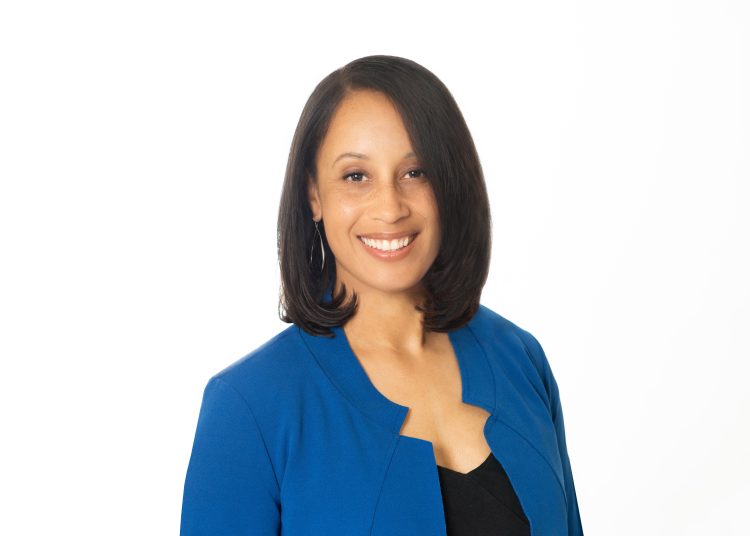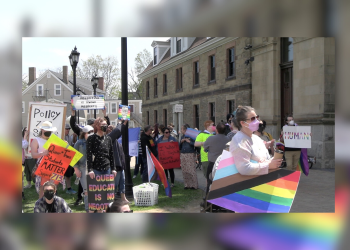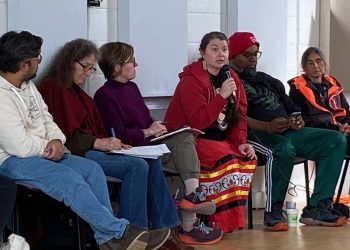Children of soldiers, left behind, are more than just collateral damage, according to scholar.
On April 3, the University of New Brunswick’s Gregg Centre for the Study of War and Society held its annual Dominick S. Graham Lecture, titled “The Color of Dust: The effort to save ‘Black babies’ from Vietnam,” and given by Sabrina Thomas.
Thomas is a professor of African-American History and War at Texas Tech University. She is the author of Scars of War: The Politics of Paternity and Responsibility for the Amerasians of Vietnam (University of Nebraska Press, 2021).
Thomas’ talk was taken from her forthcoming book, The Soul of Blood and Borders, about the Second World War (so-called “brown babies” in Germany) and the Vietnam War (Black Amerasians), “two very different wars.”
Orphaned children are commonly called “the life of dust” in Vietnamese society.
Thomas studied Hosea and Juanita Williams, leaders of the Civil Rights Movement in the United States. The Williams, taking a break from their work in the U.S., visited 15 countries during a tour during which they were hopeful to establish a “transnational racial kinship” based on the “shared struggle (…) of blackness.”
One of their stops was Saigon where the Vietnam War — called the “American War” in Vietnam— was going on in August 1971.
While her husband toured the war zone, Juanita Williams –“the first lady of one of the strongest civil rights organizations in America”— and other wives visited the orphanages where they saw biracial orphans.
Thomas said they extended the idea of a “transnational racial kinship” with the “abandoned” babies they found there and decided to “save biracial children from Vietnam.”
According to Thomas, “tens of thousands of American children abandoned in Vietnam,” a percentage of which were racialized, or “Black Amerasians.” While most were raised by their Vietnamese mothers, seven Black babies were abandoned for every three White babies, Thomas stated.
However, because of the religious bent of the Williams’ organization, “they resisted that race made the children Black” and criticized the soldiers who had “behaved immorally (…) and had a responsibility to parent.”
The U.S. Army and Williams’ organization introduced and promoted “American racism” against people of colour to Vietnam, exacerbating racial stereotypes. For example, the Vietnamese women who mothered the biracial children couldn’t escape the label of “sexual immorality” for sleeping with Black men, intensifying the need to abandon the babies that were proof of that “sin.”

One of the great ironies of the Williams’ endeavours is that Vietnam has a “long history” of biracial children, Thomas reminded the public. For example, Afro-Asian Métis existed in Vietnam, a result of the French occupation of the country from the late 1800s to 1954.
Hosea Williams wanted the children to come to the U.S. because of the larger Black racialized population that could welcome them. However, Williams’ assumption that the Black population in his own country would accept the children proved incorrect.
Black veterans and families resented the assumption that they should be responsible while White veterans were not. The stereotype “black male promiscuity” was one of the underlying suppositions, according to Thomas.
In fact, in the U.S., the Black Amerasian children were largely ignored, except for one article in Ebony magazine about the orphans which advocated for adoption.
The article focused on the racial inequalities of the U.S. adoption system that discriminated against African-Americans. According to Thomas, there were already 40 000 children in the U.S. foster care system at the time and opposition to biracial adoption was outspoken. The Congressional Black Caucus advocated for the end of the Vietnam War because of the racial inequality that existed in the war and the treatment of the returned, mostly injured, Black veterans.
In 1967, African Americans were 11% of the population but 16.3% of all draftees and, Thomas stated, 23% of all combat deaths in Vietnam were African-American soldiers.
Another factor impeding the process of adoption was that the African-American community in the U.S. was in flux because of the growing resentment against the African-American population in the gains that had been made by the Civil Rights movement. Some felt they had not gotten enough while others were worried about losing some of the gains, including the formation of the Congressional Black Caucus.
Despite this context, the Williams went ahead with the work of starting to build their orphanage for 50 children outside of Saigon, directed by someone who knew the context very well. However, the application for the project was denied by the Vietnamese government despite the fact that the Williams’ employee had already taken in a dozen children.
In the end, the Williams project failed to get even one child adopted, Thomas stated.
For Thomas, “race continued to complicate” the issue, even after the end of the Vietnam War. She added: “Questions of identity and belonging are paramount” in “understanding who we are and who we are not.”
In 1981, the Amerasian Immigration Act and, in 1988, the American Homecoming Act, both aiming to grant citizenship to Vietnamese Amerasians born between 1962 and 1975, were put in place but many Amerasian children were teenagers by that time.
For Black Amerasians who came to the U.S., Thomas declared that “despite what they look like (…) culturally they’re different” and adaptation has been difficult.
The annual Gregg Centre lecture is named after Dominick S. Graham, one of the founders of UNB’s Centre for Conflict Studies which was a precursor to the current centre whose mandate states: “We recognize that war increasingly targets civilian populations and disproportionately impacts People of Colour, 2SLGBTQ+, and other minorities around the world. Our research seeks to give a voice to those often left voiceless.”
Sophie M. Lavoie is a member of the NB Media Co-op’s editorial board.



![Poster exhibit remembers the two Japanese cities devastated by nuclear weapons [video]](https://nbmediacoop.org/wp-content/uploads/2025/10/image0-3-350x250.jpeg)



![Radioactivity and nuclear waste under scrutiny in Peskotomuhkati homeland [video]](https://nbmediacoop.org/wp-content/uploads/2025/10/EdwardsAkagiOct52025-1-120x86.jpg)


